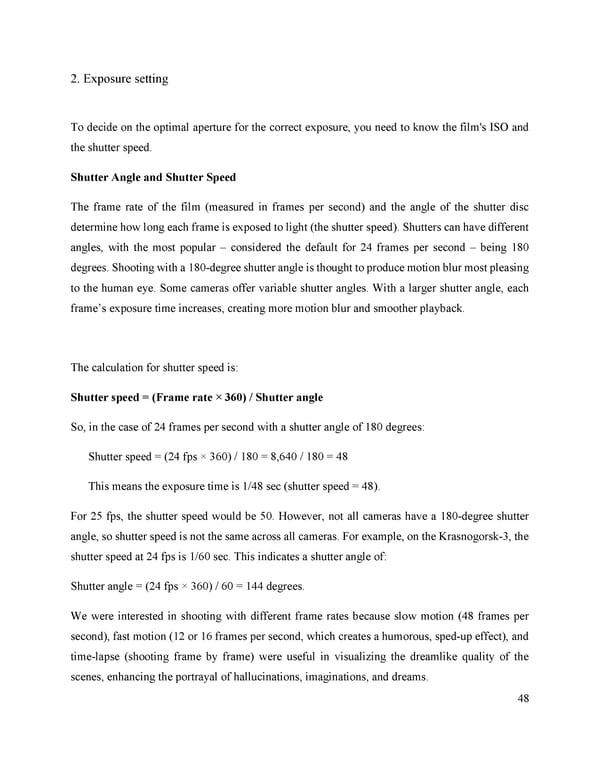2. Exposure setting To decide on the optimal aperture for the correct exposure, you need to know the film's ISO and the shutter speed. Shutter Angle and Shutter Speed The frame rate of the film (measured in frames per second) and the angle of the shutter disc determine how long each frame is exposed to light (the shutter speed). Shutters can have different angles, with the most popular – considered the default for 24 frames per second – being 180 degrees. Shooting with a 180-degree shutter angle is thought to produce motion blur most pleasing to the human eye. Some cameras offer variable shutter angles. With a larger shutter angle, each frame’s exposure time increases, creating more motion blur and smoother playback. The calculation for shutter speed is: Shutter speed = (Frame rate × 360) / Shutter angle So, in the case of 24 frames per second with a shutter angle of 180 degrees: Shutter speed = (24 fps × 360) / 180 = 8,640 / 180 = 48 This means the exposure time is 1/48 sec (shutter speed = 48). For 25 fps, the shutter speed would be 50. However, not all cameras have a 180-degree shutter angle, so shutter speed is not the same across all cameras. For example, on the Krasnogorsk-3, the shutter speed at 24 fps is 1/60 sec. This indicates a shutter angle of: Shutter angle = (24 fps × 360) / 60 = 144 degrees. We were interested in shooting with different frame rates because slow motion (48 frames per second), fast motion (12 or 16 frames per second, which creates a humorous, sped-up effect), and time-lapse (shooting frame by frame) were useful in visualizing the dreamlike quality of the scenes, enhancing the portrayal of hallucinations, imaginations, and dreams. 48
 Lost Analogue: Exploring Film, Music, and Interdisciplinary Methods in Education Page 48 Page 50
Lost Analogue: Exploring Film, Music, and Interdisciplinary Methods in Education Page 48 Page 50